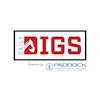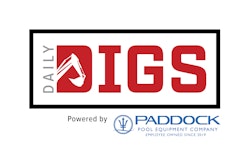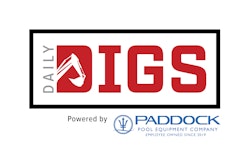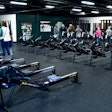Any attention given to the energy efficiency of your laundry operations is bound to have a positive impact, both environmentally and financially.
In November, the federal Energy Information Administration released its short-term outlook for residential energy prices for winter 2004-05. Compared to last winter, heating oil prices were expected to increase by 29 percent, propane by 17 percent and natural gas by 11 percent. (The administration expected electricity prices to remain relatively static.)
What the EIA didn't announce were projected commercial prices for natural gas, which are expected to jump significantly in every region of the country. Compared to last January, the commercial price of natural gas was estimated to rise by 26 percent this month in Washington state, 63 percent in Oklahoma, 73 percent in Maryland, 141 percent in Minnesota and 148 percent in Louisiana.
The latter figure may lead some readers to blame last fall's devastating hurricanes for disrupting oil and gas production throughout the Gulf Coast. Others may find it more appropriate to fault the unexpectedly high global demand or turmoil in the Middle East for sending the price of crude oil to its highest levels ever. Regardless of whoever or whatever is responsible for this winter's high energy costs, athletic and fitness facility operators across the country are being forced to pay greater attention to their energy consumption.
There's no better place to start conserving energy than in the laundry room. Consider this: Laundry rooms housed within college athletic facilities are regularly counted upon to process several hundred practice and game uniforms daily, and the seemingly simple task of washing towels at private fitness centers can easily become an around-the-clock affair. Indeed, laundry rooms in sports and fitness settings see their share of action, and in the process consume a lot of water, gas and electricity.
Mandates to cut back on energy costs are becoming more commonplace on publicly funded college campuses, says Randy Karn, director of national accounts and on-premises laundry sales for Maytag Commercial Laundry. "Most state budgets are being slashed," he says. "Governments are telling colleges, 'You have to cut your energy spending or we won't fund you as fully as we did before.' "
Energy rebate programs sponsored by local and state governments or utility companies are becoming an increasingly popular way for businesses and institutions to show their commitment to energy efficiency, either by purchasing equipment or adopting policies designed to conserve energy.
Many organizations offering energy rebates belong to the Boston-based Consortium on Energy Efficiency (cee1.org), a nonprofit, public-benefit corporation that actively promotes the use of energy-efficient products and services. Supported by the U.S. Environmental Protection Agency and the Department of Energy -- co-sponsors of the well-known Energy Star® program -- the CEE boasts a diverse membership, including electric, gas and water utilities, research and development organizations, state energy offices and regional energy programs.
Through 16 initiatives, the CEE encourages utilities and other partners to pool their market influence by voluntarily adopting common programs and efficiency specifications to permanently increase the supply and usage of energy-efficient products and services. The consortium's "Commercial, Family-Sized Clothes Washer Initiative," begun in 1998, encourages the purchase and use of energy- and water-efficient washers for laundromats, multifamily buildings and institutions.
According to the CEE, high-efficiency commercial washers can save as much as 50 percent on energy costs and use about 30 percent less water than conventional machines, creating less pollution and wastewater.
The CEE regularly publishes a four-tier set of efficiency specifications for commercial washers. As of last June, nearly 200 models of commercial washers from 11 different manufacturers met at least the most basic of these specifications, which require washers to have a Modified Energy Factor (MEF) of 1.42 and a Water Factor (WF) of 9.5.
Modified Energy Factor is an equation used to measure energy consumption throughout the entire laundry cycle, taking into account how much energy is used in the wash cycle as well as how much dryer energy is required to remove the remaining moisture in washed items. It indicates how many cubic feet of laundry can be washed and dried with one kilowatt per hour (kWh) of electricity; the higher the MEF, the greater the washer's efficiency.
Water Factor tells how many gallons are needed to wash each cubic foot of laundry. A lower number indicates lower consumption and more efficient water use. (Only five washers meet the CEE's highest tier of standards, which require an MEF of 1.8 and a WF of 5.5.)
According to the CEE, washers meeting the consortium's specifications can yield water savings ranging anywhere from 28 to 59 percent, or an estimated annual savings of up to 25,000 gallons per machine, assuming it runs three cycles per day. Based on CEE calculations (assuming three cycles per day), a high-efficiency laundry operation using gas water heating and gas drying conserves anywhere from 59 to 74 therms of natural gas each year. (Approximately 70 percent of commercial washers rely on gas water heating.)
Compared to conventional machines, each high-efficiency operation using electric water heating and drying can save anywhere from 1,686 to 2,168 kWh per year -- or $120 to $154, based on last year's average commercial electricity price of $.071/kWh. (Neither the CEE nor the EPA/DOE Energy Star programs rate dryers for energy efficiency because most dryers use similar amounts of energy, although overall savings resulting from decreased drying time and energy were computed into the figures cited above.)
Currently, 30 agencies from nine states (California, Colorado, Minnesota, New Mexico, New York, Oregon, Texas, Washington and Wisconsin) participate in the CEE's commercial clothes washer initiative. The California Public Utilities Commission's LightWash program, for example, gives rebates to businesses that purchase commercial washers meeting the CEE's Tier 3A specifications. Depending on the purchaser's local water utility, rebates range from $150 (from the San Francisco Public Utilities Commission) to $450 (the Marin Municipal Water District). "The utility companies participating in these programs are doing so because they don't want to have to build new power plants, even though they come out on the short end initially for giving away rebates," says Karn.
Facility operators who purchase high-speed washer-extractors may, too, initially feel as if they're getting the short end of the stick. After all, high-speed, front-loading models are often priced about twice as high as conventional, top-loading machines. But when making such a purchase, facility operators should keep two things in mind: one, the significant energy cost savings attributable to a high-speed washer will help pay that equipment off in as little as two years, according to cost-benefit models published by the EPA. And two, the horizontal-axis technology that allows high-speed washers to achieve spinning forces in excess of 200 Gs is also what's responsible for the machines' low water usage, which reduces drying time (see "Spin Control," Dec. 2002).
According to Andy Kretz, director of sales and marketing with laundry equipment manufacturer The Dexter Co., "more efficient extraction also cuts down on dry time, so you have 20 to 25 percent less gas usage."
"Energy efficiency starts at the beginning and works its way through the laundry process," says Gary Gauthier, marketing manager at laundry equipment manufacturer Pellerin Milnor Inc. "If you fill a top-loader full of towels, you need a lot of water to saturate all of those goods. In a front-loader, you only need to fill the bottom of the cylinder. You're not using nearly as much water per pound of goods."
Laundry managers in athletic and fitness facilities may soon have another energy-efficient tool at their disposal. For several years, U.S. hotel chains large and small have been using ozone injection systems, which continuously charge, or inject, appropriate levels of dissolved ozone into wash water to help whiten, disinfect and remove soil from linens. A typical ozone injection system, which can charge either fresh or recycled water, consists of an ozone generator, an air preparation cabinet, pumps and level switches, and an ozone injection device.
There are currently several ozone generation systems on the market designed specifically for laundry operations. The systems come with high upfront costs -- although utility rebate programs can help offset 70 to 80 percent of a facility's capital investment, installation costs can range from $25,000 to well over $100,000, depending on how many washers are connected to the system.
However, ozone has gained a considerable following because of its ability to launder effectively in lukewarm water, dramatically reducing energy costs associated with heating wash water. Conventional washing methods require that 70 percent of wash water be heated to temperatures between 140° and 180°F for proper stain removal, when used in conjunction with conventional chemicals. Ozone washing systems only require water to be heated to about 95°F, and only when used for heavily soiled loads. Other byproducts of ozone laundering include shortened wash times and reduced chemical usage (and thus, less negative environmental impact).
According to one California-based manufacturer of ozone injection laundry systems, a conventional wash load, from start to finish, requires one wash cycle, one bleach cycle, three rinse cycles, one sour cycle (sour is used to neutralize alkalinity in fabrics, reducing skin irritation) and one extract cycle, consuming 28 minutes and 206 gallons of water in all. By comparison, a washer connected to an ozone injection laundry system needs only one wash/bleach cycle, two rinse cycles and one extract cycle, taking five minutes less time and using 117 fewer gallons of water.
Considering the tremendous potential to reduce energy costs in the wash cycle (and given the fact that commercial washer-extractors have all but cornered the market on energy-efficiency ratings), some might be inclined to disregard dryers' contributions to a laundry's energy efficiency as negligible. That would be a mistake, says Tony Regan, vice president of sales for American Dryer Corp. "Nowadays, dryers are much more efficient than in years past," he says.
Here's why: Microprocessor controls and moisture sensors help take the guesswork out of the drying cycle, all but eliminating wasteful over-drying, a common problem in laundry rooms. "Some guys will crank that thing up to 45 minutes, plus allow 10 minutes of cool-down time, when the towels will probably be done 15 minutes before the timer goes off," says Joel Jorgensen, sales and market development manager for laundry equipment manufacturer Continental Girbau Inc. "All the wear and tear on terrycloth doesn't come from the washer -- it's from the 185° of heat and mechanical action of tumbling. Micro-technology saves linens and reduces the chance of dryer fire."
In addition, the advanced design of today's tumblers allows for more efficient airflow. "Welded cabinets reduce heat loss or 'skirting' -- air escaping the cabinet, as opposed to going through the clothes," says Regan, whose company focused on this issue in particular during a recent redesign of its main product line.
Any attempts to improve airflow efficiency must work within the confines of a basic principle of dryer operation. Tumblers turn in a clockwise direction, their spines lifting linens from near the bottom of the cylinder (say, the eight o'clock position), carrying them to a maximum height (one or two o'clock) and eventually dropping them back down to the cylinder bottom (six or seven o'clock).
According to Kim Shady, national sales manager for UniMac, a division of Alliance Laundry Systems, the most efficient means by which to dry linens is to direct hot air through a path perpendicular to the downward tumble path of the drying items.
Shady says that it's important for facility operators to understand this concept so that they can make better-informed purchasing decisions. "Some dryers have high BTU [British thermal unit] or cfm [cubic feet per minute] ratings," he says, referring to a dryer's hot-air output. "The air passing across those linens may be faster, but it's not always as efficient. It's kind of like when you pass your finger over a flame real fast. It doesn't hurt, but let your finger stay on the flame awhile. You're going to feel it. The same thing is true with your dryer. You want to direct air through the center of the cylinder, not around the edges."
Not all facility operators can afford to purchase new equipment, but everyone can benefit from a few commonsense tips to improve their dryers' energy-efficiency. "The first thing we always tell people -- whether you have an old dryer you're trying to make more efficient or a new dryer -- is to maintain your equipment," says Regan. "And I don't mean maintain as in tighten the screws or lubricate the bearings. I mean cleaning the machine. Lint buildup causes mis-ignition and reduces airflow." It is recommended that facility operators clean their dryers' lint screens daily and their exhaust vents once a month, "otherwise the air can't flow as much as it needs to," says Shady.
Ensuring sufficient make-up, or intake, air is just as critical to efficient dryer operation. A simple rule of thumb: at each intake vent opening, dedicate one square inch of surface area for every 1,000 BTUs produced by the dryer (for example, if the dryer pumps out 100,000 BTUs, then provide at least a 10-by-10-inch, or 100-square-inch, intake vent opening). "Make sure you have good air coming in, especially for anything that runs on gas," says Shady. "As many as 50 percent of installations don't have good air, which means they're not getting enough heat in their dryers and they're wasting gas."
Dryers are designed to actually pull -- not push -- air through their cylinders. Strategically placed fans near the bottom of tumbler cylinders pull hot air through the chamber. That said, facility operators should be aware that insufficient make-up air also allows for the buildup of backpressure, which prevents a dryer from exhausting excess heat. "If you don't have sufficient make-up air, your dryer won't cycle properly," says Regan. "The dryer will run, but its safety features will prevent the heat from coming on. This usually extends your drying time, and even though the heat won't come on, you're still using electricity."
Providing make-up air is as easy as cutting a hole in a wall above a dryer, although Karn suggests using plastic or metal rigid-mount venting rather than collapsible pipes. In addition, Jorgensen recommends dedicating a non-conditioned or outside air source to accommodate make-up dryer air needs. "If at all possible, if space allows, enclose your tumblers," he says. "When I walk in some facilities and they're using room air -- which, of course, in the summer is cooled and in the winter is heated -- they're using conditioned air that they're paying for. Where I come from, that's called double jeopardy. Make-up air is going to take the path of least resistance. The dryer will take air from wherever it can get it."
Perhaps the simplest but most often overlooked method to improve a laundry operation's efficiency involves a little bit of common sense, and a little bit of foresight. "Generally, you should size your dryer about 50 percent larger than your washer-extractor," suggests Jorgensen, lest dreaded bottlenecks bring your laundry operations -- and energy savings -- to a screeching halt. "That's almost like having a backhoe digging in your yard the same day the concrete guy shows up to put in your foundation. You can't have that kind of tripping over each other in your laundry operation, especially in an around-the-clock facility."
































